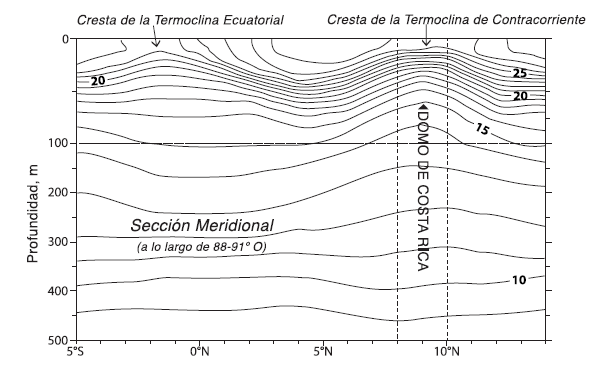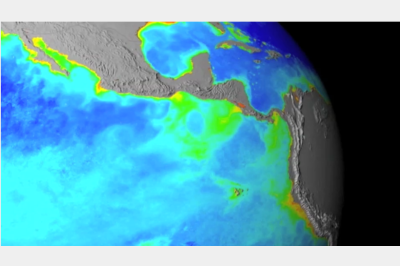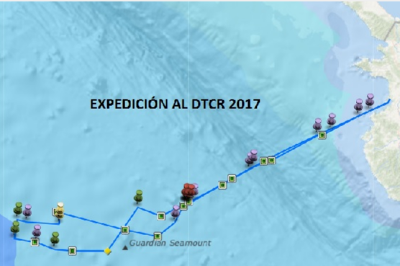The Thermal Dome is a critical area for marine biodiversity in the Eastern Tropical Pacific. It is located west of Central America and can measure between 300 and 1000 kilometers wide. The average position of the Dome core is located near 9° North and 90° West, in areas outside national jurisdictions. Its diameter and position vary from year to year and along a characteristic annual cycle (Fiedler, 2002). It was first detected in 1948, through bathythermographs located on ships traveling from California to Panama. Its scientific description was made by Townsend Cromwell in 1958 in the bulletin of the Inter-American Tropical Tuna Commission1. In this article Cromwell indicated that “this area will be referred to as the Costa Rica Thermal Dome, or for convenience, simply as the Dome.”

Since the 1950s, the Dome has been observed and studied on several occasions, as a result of the productive tuna fishery that began to develop in the region. Several expeditions have partially sampled it, including the Costa Rica Thermal Dome Expedition of the Scripps Institution of Oceanography’s Tuna Research Program in 1959 and the Mexican DOMO expeditions between 1979 and 19822.
This oceanographic phenomenon results from the action of winds and ocean currents that produce the vertical displacement of deep, cold, nutrient-rich waters that approach the surface, creating an upwelling zone. This upwelling mobilizes an enormous mass of water (about 3.5 million m3/s)3 to the surface. This mass of cold water is located close to 15 meters from the surface, while in the vicinity of the DTCR it is found at much greater depth4. As they approach the surface, nutrients in the cold water mass combined with sunlight produce a massive growth of algae.

Annual meridional average of temperature sections across the Costa Rica Thermal Dome. Source: Fiedler, P.C. 2002. The annual cycle and biological effects of the Costa Rica Dome. Deep Sea Research Part I. Oceanographic Research Papers Vol. 49(2): 321-338.
This is how, with the greater presence of algae, the first step in the food chain, there is more food available for zooplankton, causing an explosion in their populations. This in turn manifests itself in each link of the food chain, generating an oasis of resources in the sea. The Costa Rica Thermal Dome receives this name due to the characteristic dome shape generated by the thermocline when approaching the surface. Because it shows this shape and its average core is located in front of Costa Rican waters, this phenomenon was baptized by Cromwell (1958) as the Costa Rica Thermal Dome.
For more information visit: Costa Rica Thermal Dome
Viewers
The Thermal Dome is a shallow and strong thermocline in the open sea, where cold, nutrient-rich waters emerge. This condition has made it a basic habitat in the life cycle of blue whales, but also an aggregation site for species of great fishing interest, such as tuna. Its dimensions vary in size and position during the year, but an average position close to 9° North latitude and 90° West longitude is predictable.






